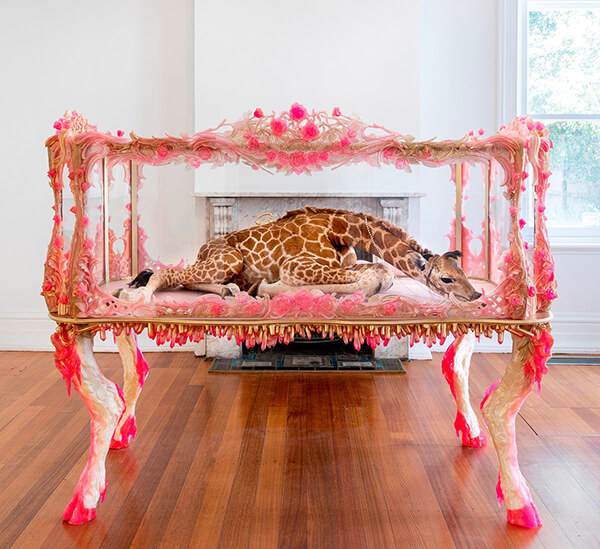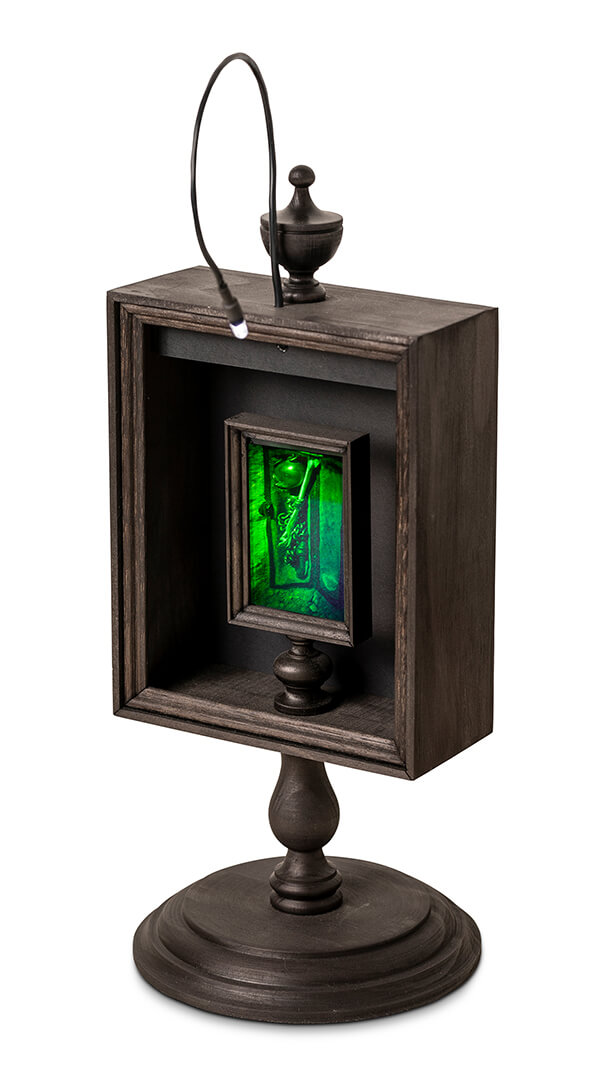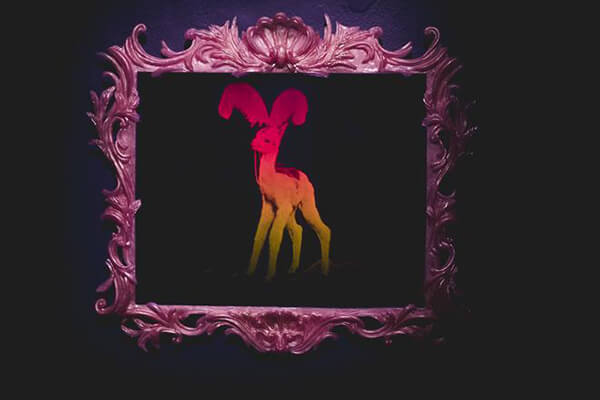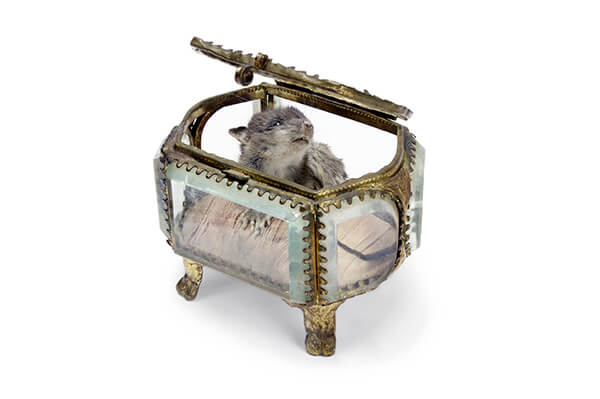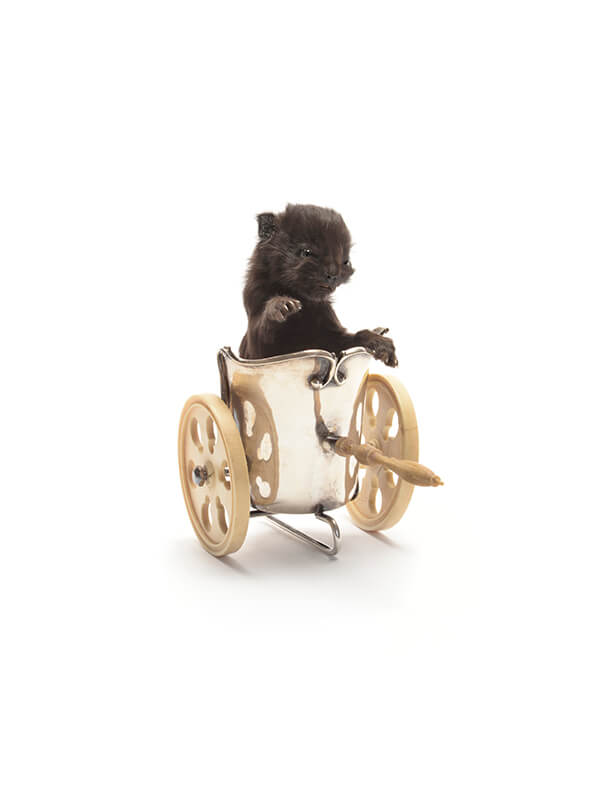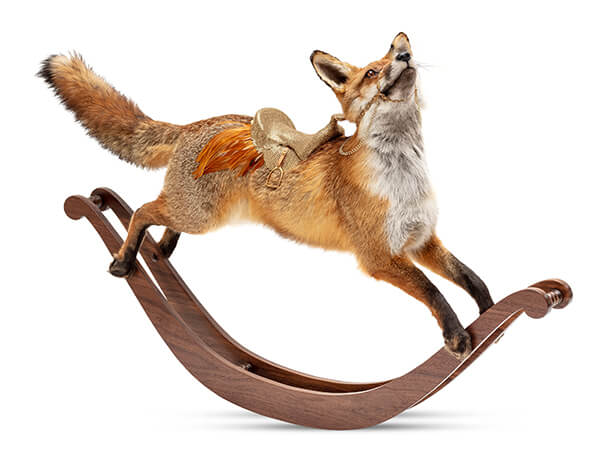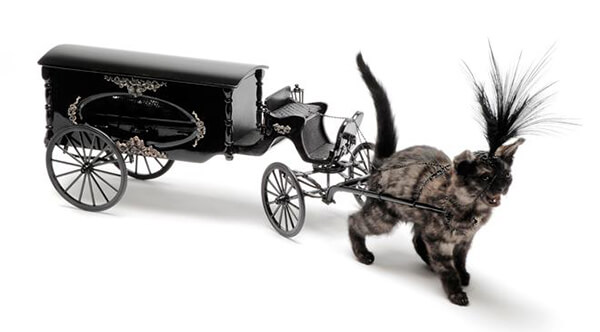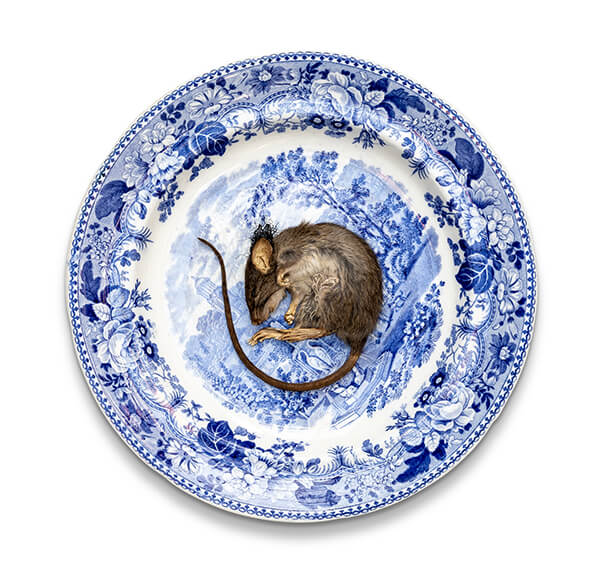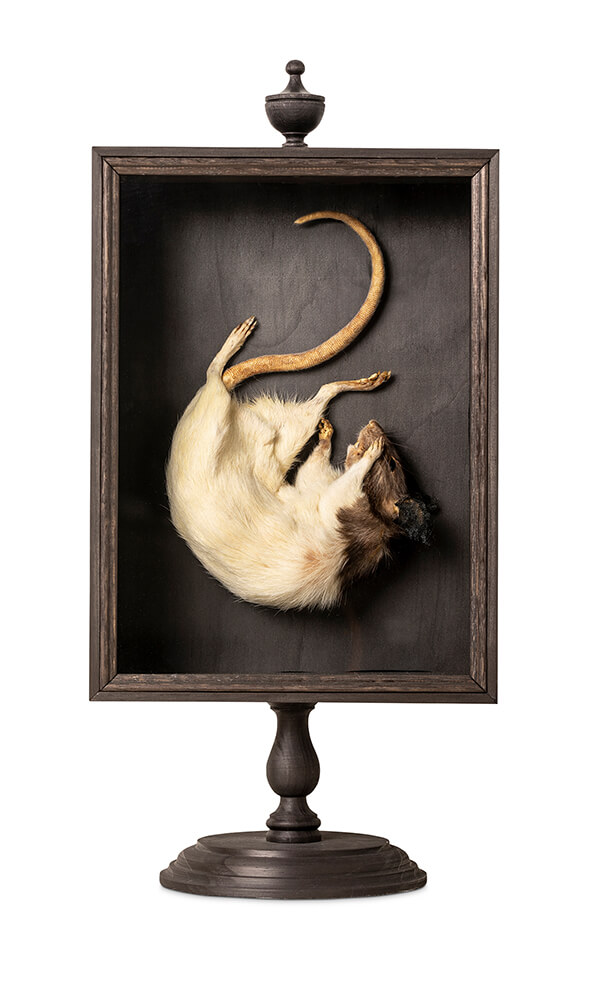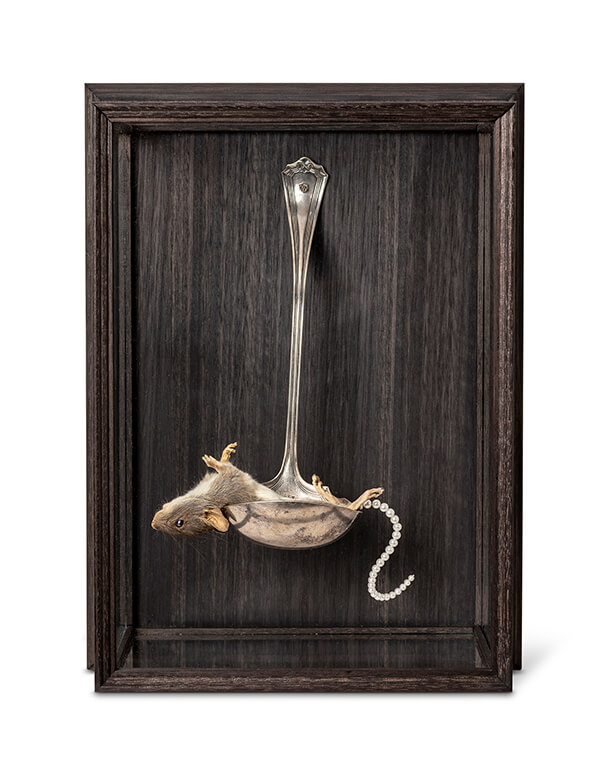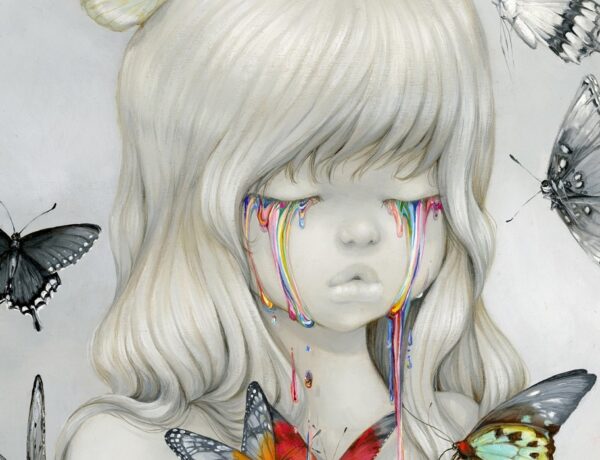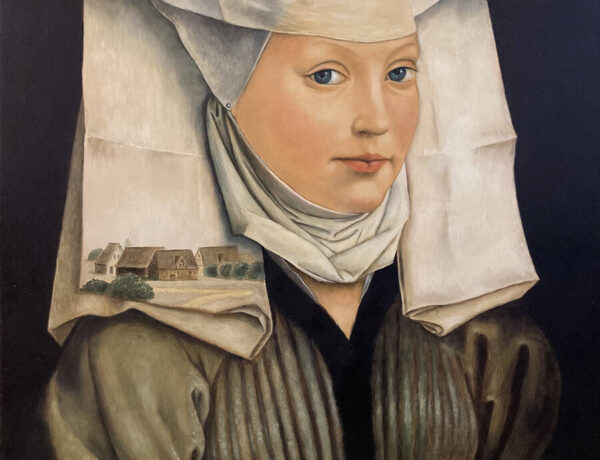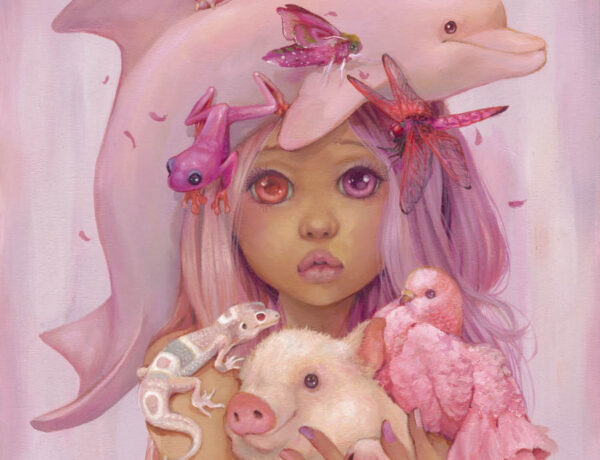Animals, divinely sentient beings, have long been cast as the magical companions to our journey on this earth. As our equals, animals have, throughout many ancient cultures and spiritual practices been our guides- there to gift us lessons and secrets of the universe if only we chose to listen. For some cultures, they nourish us, but not without deep respect and fierce reverence of their bodies and their essence. But somewhere along our collective path, as man grew more human centric, this connection to these sentient beings altered and increasingly, man has sought to conquer and consume. Julia deVille is a jeweller and taxidermist creating contemporary, neo-Victorian, memento mori from the bodies left behind of these sentient beings. In doing so, she challenges the commonly held, current human centric belief that earth, nature and the animals that inhabit it are lesser than us and are to be conquered and simply consumed.
The beautifully crafted works of Julia deVille posit that we are not here to conquer but we are here to listen, to learn and to grow- from one threshold to the next.
Sophie Gannon Gallery in Melbourne is currently showing a 10-year retrospective of Julia’s work through the 12th of October. The show presents a collection of some of her most celebrated works and is said to be her last planned showing of her works in Australia for the foreseeable future!
We hope you enjoy our exclusive interview with Julia deVille! 
Julia deVille speaks about her practice and all things life and death
As a child, you speak of being fascinated by death- as your own life was still unfolding, why do you believe you were so fascinated with the end?
I have no idea to be honest. I feel like death was an ingrained part of me because my fascination came long before I encountered the death of a family member or pet. I don’t even know how I learned about death at such a young age – I can only assume my parents, who were very open about such topics, had explained death to me before the age of three (when I became verbally active on the subject).
I’ve noticed you often use in your work and reference the latin term Disce Mori – Learn to Die : While we are learning to live, what does it mean to you to learn to die? How do these words intertwine with your work?
I consider Disce Mori to be synonymous with Carpe Diem. I believe to fully appreciate life, we must first accept or even celebrate death… one can’t exist without the other.
In a previous interview, you speak about being a 16 your old girl wanting to learn about taxidermy and not being taken seriously- how did you come to find your mentor in the craft of taxidermy?
I used to frequent a shop called Wunderkammer, purveyors of medical antiques and other such wonderful curios. The owners, Heather and Egor, put me in touch with a friend’s father who was a retired taxidermist. He generously offered to teach me and that was the start of it all…
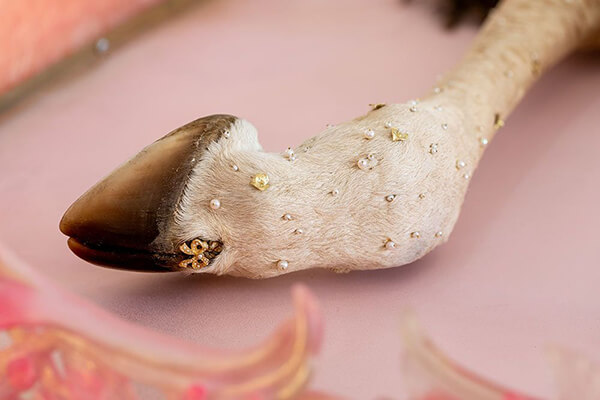
Often mentors gift us seeds of knowledge that transcend the skills they teach us. What knowings were you gifted from your mentor that has informed your arts practice?
My biggest lessons from Rudi were more life lessons than things to do with my art practice (of course he was an influence in the technical elements of my practice too). He showed me men could be kind and faithful, during a time in my life where I was questioning this. He is a joyful human and finds a way to make the mundane, fun and kooky – his lightness of spirit is something I greatly admire but have not yet mastered. He truly is one of the most influential people in my life and simply writing about him now acts as a Memento Mori/Carpe Diem for me.
I have been lucky enough to see one of your works, Mother is my Monarch, recently show at the Art Gallery of South Australia. What I adored about this piece was how the life of the creature, in its death, had been held with such fierce reverence. Your treatment of each creature feels so delicate, beautiful and celebratory. Can you speak about the importance of giving life to these animals, in their death, through your work:
Mother is my Monarch is hands down the best thing I have brought into existence. She is a tribute to my Mother, Janette and turns out to be one of those instance where ‘everything just works’. When a piece like this occurs, it feels more like divine intervention than any actual skill I possess.
I have always loved animals and for me, taxidermy is a way to celebrate them. All animals in my work have died of natural causes and I adorn them with precious metals and gems to show their preciousness and my reverence for the Animalia Kingdom. The giraffe for this particular work was stillborn at Adelaide Zoo over thirty five years ago. She had been in the freezer of the Queen Victorian Museum until I acquired her about 7 years ago. It took me over five years to get the funding to produce the work and find a suitable location to exhibit her. I posed her in a way that shows her fragility but also her strength. The duality found in all my work. She is decorated with hundreds of Akoya pearls, over a thousand rose cut diamonds as well as gold, with gold, silver and the setting from my ex-husband’s engagement ring (which he kindly donated).
The Victorian tradition of taxidermy, while we can romanticise its often Victorian aesthetic, is historically, about man conquering nature – but your works, with each creature ethically sourced and delicately handled, are a departure from that heritage and become a beautifully passive protest to this legacy. Can you speak with us, firstly about how you ethically source each of your animals and secondly how your animal rights activism intersects with your arts practice or speaks through your work:
As mentioned, all animals I use have died a natural death. I get a lot of donations from people; pets when they die, birds they find etc. I also get a lot of stillborns from farmers and zoos. My work is not about turning people vegan or vegetarian, I am simply trying to decondition people, so they see the reality of the way they consume animals, in a manner that leads them to make more informed decisions, decisions they are morally aligned with.
In a previous interview you speak about the creatures that you receive being more precious to you than diamonds or gold. Why are these creatures, in their death, more precious than diamonds or gold?
As a jeweller, I can buy any precious material I desire; my only limit is the financial outlay. In turn, my animals have multifaceted preciousness, as someone who only works with animals that have died naturally, I cannot say “I want a giraffe, let me go and buy one” – I must wait until she comes to me. There is also the value of a life – how can we say a diamond is more precious than the sentient experience of a living creature? To take that concept one step further, how precious is the un-lived life of a stillborn? We can’t place value on such things, they are inherently priceless. A diamond however will always have a value, one that is dictated by market forces/collective human beliefs…
Animal pelts, feathers, skins and bones have long been used as objects of magical and spiritual significance. What symbolic or spiritual significance do you believe is held within each of the animals you work with?
I feel like these things hold a talismanic quality. Energy pervades beyond death, even if it’s merely via a human experience of an emotion, instilled by the sight of what remains of the animal.
Through their jewelled features and playful, curious poses each of your pieces feel alive, their death becoming just an opening to another life. Do you believe death is just a threshold to another part of our journey?
Yes, I believe death is part of an unending (and somewhat unnerving) cycle. I don’t know where we go or what happens after death but I like to believe our energy carries on in some sort of conscious way, albeit potentially an unrecognisable way from this Earthly embodiment.
What do you know to be true of the world and how is this truth expressed through your arts practice?
I don’t know what is true of the world, but I know what is true in my world; beauty is one of the most essential parts of life, as is connection and love. These are things I try to create for or evoke in my audience. I want to give them a moment where the incessant chatter of the mind stops and they are gently pulled back from whenever they were (past or future), into the present. To feel is one of the most precious things in life. The more we can feel, the closer to our true nature we are.
Taxidermy and jewellery are crafts that exist between science and art, can you speak with us about your interest in science and how this is increasingly finding its way into your work?
At school my loves were physics, chemistry and art… and this is what my career is comprised of. I think science and art are different methods humans use to try and understand existence. My work is definitely my own way of trying to make sense of life. As an introvert, it’s also my way of connecting with others as I find it easier to communicate visually than verbally.
In your holographic works, you beautifully juxtapose your interest in Holographic Universe Theory with your taxidermy practice. Can you unpack for us Holographic Universe Theory?
(I did Google… and frankly, got very confused!)
Ummmm… long story short a true laser viewable hologram contains the information for the whole in every part e.g. if you break a hologram in half, both halves will now reveal the full hologram. Interestingly, the human brain operates in a similar way. Holographic Universe Theory poses that the smallest part (your thumbnail for example) contains the information for the entire universe. It can be extrapolated out to Simulation Theory (an idea I find fascinating) with the analogy of a laser beam being used to ‘illuminate’ the hologram of our existence.
Sophie Gannon Gallery is currently showing a survey of your works spanning the last decade – what has it meant to you to be able to show such a survey of your work? Do have a favourite piece in this show?
To be honest I can’t believe I’ve been making work for this long. In fact, I’ve actually been exhibiting for about 15 years but the works in this show date back to 2009. I’ve realised a few things from doing this exhibition…
- I am very good at setting up an exhibition now. This one only took me six hours to install – it used to take me days.
- I no longer enjoy setting up exhibitions!
As a result I will be taking a protracted break from taxidermy/exhibiting. I have recently moved home to NZ (although my jewellery showroom/work will still be based in Melbourne), where I will be focusing on making more wedding and engagement rings for the next few years. This means this is the last chance to acquire one of my taxidermy works as I will be shipping everything that is left home to NZ.
As for a favourite piece… there is actually a raven in the show that is unfinished and untitled. He is a blank canvas and is available for sale as a bespoke piece – an open-ended work. I like this because it is a metaphor for my new life… yet to be determined but the end result is up to me (but not without communion with others).
Julia deVille Social Media Accounts
Website | Twitter | Facebook | Instagram
Related Articles
Wholeness and the Implicit Order by Julia deVille @ Linden New Art


